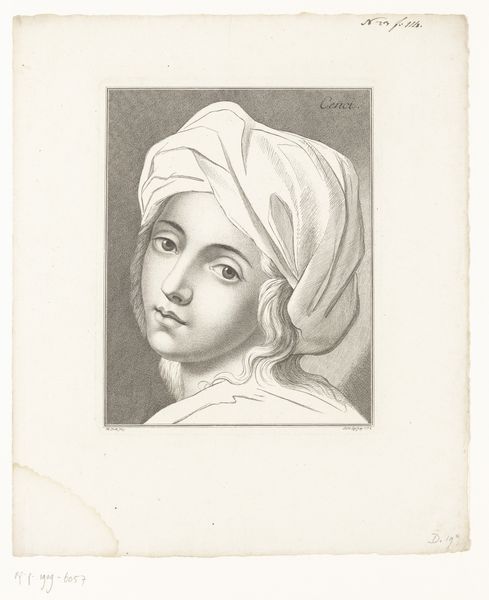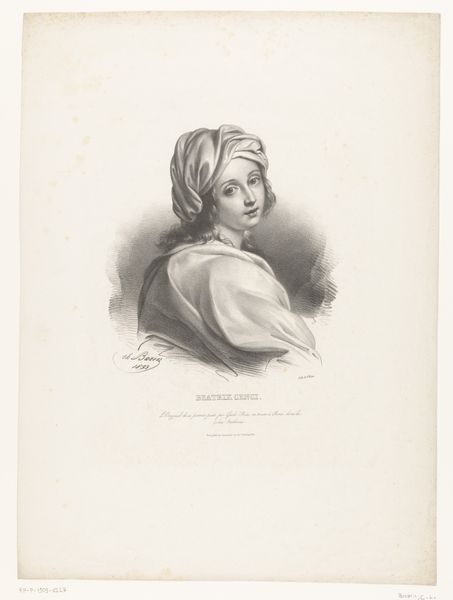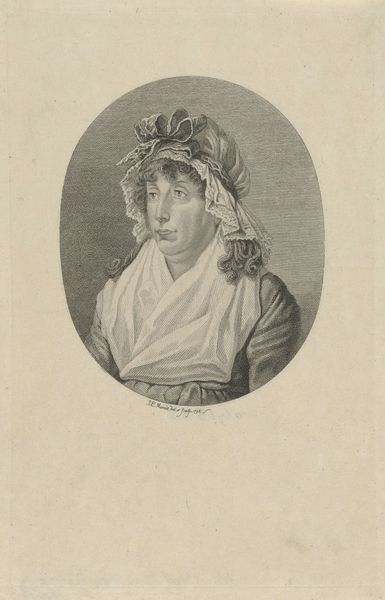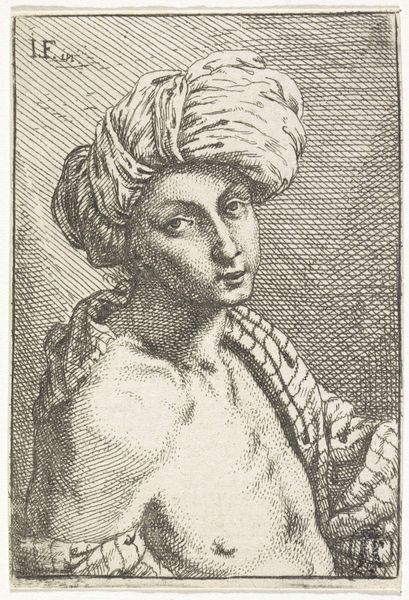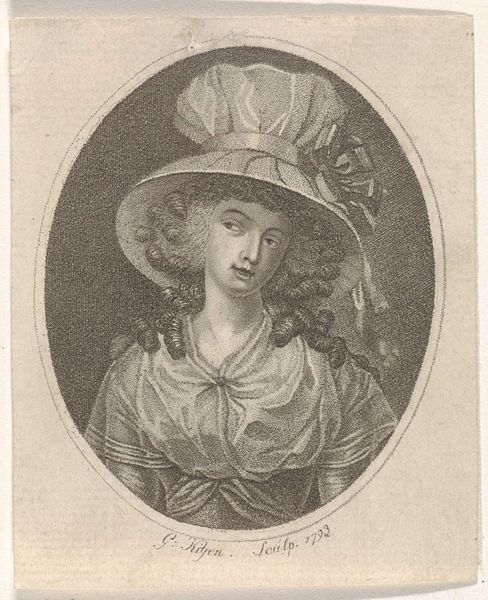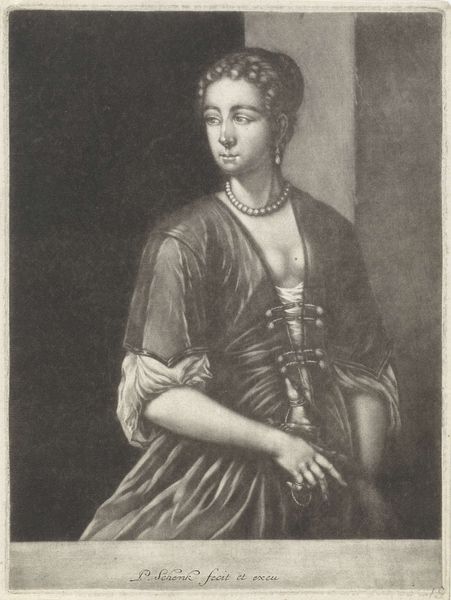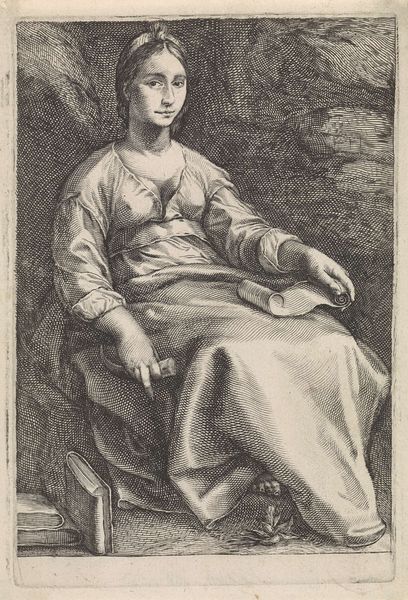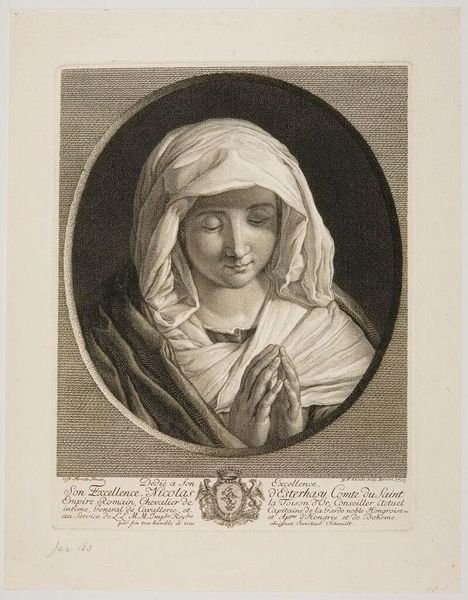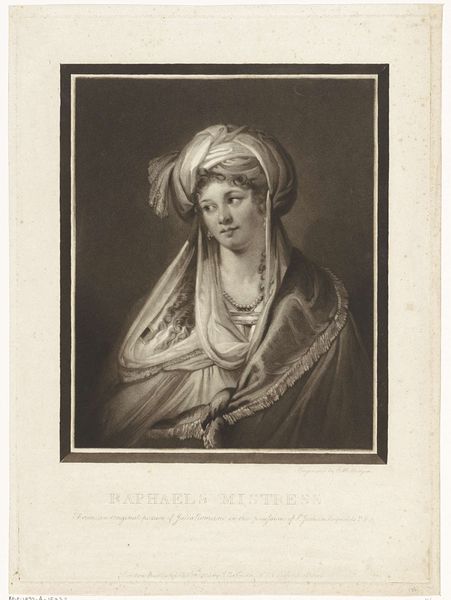
Portrait of Beatrice Cenci in bust-length, turning to face outwards with a cloth wrapped around her head, after Reni 1800 - 1835
0:00
0:00
drawing, print, engraving
#
portrait
#
drawing
# print
#
romanticism
#
history-painting
#
engraving
#
portrait art
Dimensions: Sheet (Trimmed): 13 1/4 × 9 7/8 in. (33.7 × 25.1 cm)
Copyright: Public Domain
Curator: Before us we have Giovita Garavaglia’s “Portrait of Beatrice Cenci in bust-length, turning to face outwards with a cloth wrapped around her head, after Reni,” created between 1800 and 1835. It's currently housed here at the Metropolitan Museum of Art. Editor: What strikes me immediately is the textural detail achieved through the engraving—look at how the fabric drapes, catching light in the folds. It’s beautiful, almost tactile despite being a print. Curator: Indeed, Garavaglia is working within the Romantic movement here, revisiting and reimagining Guido Reni's original painting. Consider Beatrice Cenci's story—a young woman from a noble Roman family, executed for allegedly plotting against her abusive father. This image became an icon of victimized innocence during that time, speaking to themes of social injustice. Editor: That socio-political reading is interesting. What about the sheer labor involved in creating this print? Every line is a conscious mark, and those gradations in tone—achieved through countless tiny engraved lines—demand both skill and immense patience. How does that level of handcraft intersect with the mass-producible nature of prints? Curator: It adds layers to our understanding. Garavaglia wasn’t merely reproducing an image; he was actively participating in a dialogue about power, victimhood, and the politics of representation. Think of how this image, easily reproduced, circulated ideas about justice and female suffering. Editor: And it speaks to a growing market for these kinds of reproductive prints, allowing people of middling means to engage with powerful images. The choice of engraving, as opposed to other methods, impacts distribution and consumption as well. Curator: It all returns us to context; the choice of subject, medium, and the intended audience. Considering that prints could bring awareness to situations that may have otherwise remained unspoken within society, in what ways can Garavaglia's decision making provide the audience an opportunity to contemplate those realities? Editor: Absolutely, seeing how it highlights both the material process of creation and the subject's socio-historical positioning enhances our understanding. Curator: It gives one pause to reflect on the legacies that still influence societal interpretations to this day. Editor: Yes, truly food for thought, material and immaterial combined!
Comments
No comments
Be the first to comment and join the conversation on the ultimate creative platform.
